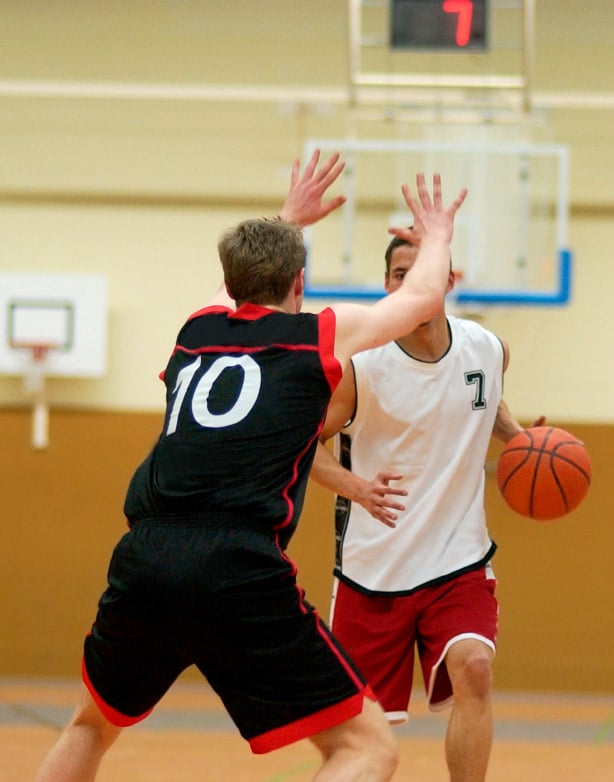Preparing for School Sports
 The new school year brings with it a new season of high school sports. For the athletes and their friends and families, that translates to excitement, achievement and, unfortunately, injuries. High school athletes account for an estimated 2 million injuries, 500,000 doctor visits and 30,000 hospitalizations each year.
The new school year brings with it a new season of high school sports. For the athletes and their friends and families, that translates to excitement, achievement and, unfortunately, injuries. High school athletes account for an estimated 2 million injuries, 500,000 doctor visits and 30,000 hospitalizations each year.
Football warrants the most injuries due to the collision contact nature of the game. Those injuries typically include ankle sprains; contusions; hamstring and quad strains; and, of course, concussions. Sometimes these athletes will suffer from shoulder and other dislocations and fractures.
High school soccer and basketball players are also at risk for these types of similar injuries but, additionally, they have far more soft tissue injuries, such as ankle sprains and hamstring or muscle strains. Basketball players, especially females, are susceptible to ACL injuries.
Those sports will never stop being aggressively competitive, but there are some measures student-athletes can take to prevent injuries, including physical exams, strength conditioning, warming up adequately and proper nutrition.
Sports Physicals
Proper safety starts before the first game, or even the first practice, of the season. A Sports Physical with a family doctor or sports medicine physician ensures students are in good health and proper physical shape to participate in school sports.
The student will have his or her height, weight and blood pressure measured as well as their skin, ears, eyes, nose, throat, neck, breasts, lungs, heart and abdomen checked. The doctor may also request certain blood tests, such as tests for cholesterol levels, anemia or thyroid problems.
The physical gives the student an opportunity to check their health status, learn how to stay healthy and plan on what to do if problems arise or injuries occur during the season. It also gives the doctor an opportunity to learn about the student’s past and current health status.
Strength Conditioning
Strengthening programs are important for all sports. Many sports-related injuries can be prevented when an athlete regularly conditions prior to their sport’s season. Injuries often occur when an athlete suddenly increases the duration, intensity or frequency of their activity.
Oftentimes, athletes have not spent time conditioning themselves in the offseason and will come into the preseason unfit. This leads to susceptibility for all injuries – from muscle strains to concussions. These athletes are weaker and fatigue more quickly, which may change their technique and make them more susceptible to injuries.
If they are out of shape at the start of the season, student-athletes should gradually increase their activity level and slowly build themselves back up to a higher fitness level.
Specific strengthening programs have been shown to reduce the incidence of ACL tears in basketball and soccer. In athletes, stretching and a gradual increase in a running program will help avoid a lot of acute muscle strain situations.
Warm-Ups
Athletes who warm up before running onto the field are less likely to sustain an injury. Going right into intense athletic activity without warming up is similar to stretching a cold rubber band – it snaps much more easily than a warm rubber band.
A warm-up simply involves doing the less intense version of the activity the athlete will do during practice or game time. A warm-up increases the athlete’s heart rate and blood flow to working muscles, making them less susceptible to injury.
A Proper Diet
Another relatively easy way for high school athletes to prevent injuries is to make sure they are drinking plenty of water and eating a healthy diet. Improper diet and hydration lead to earlier onset fatigue and can compromise the athlete’s ability to avoid fatigue-related injuries.
A poor diet can lead to muscle weakness, decreased strength and endurance. Drinking plenty of water throughout the day, during and after your workout is just as important when it comes to preventing injury.
So remember – a high school athlete with a well-conditioned and warm body with adequate fuel (food and water) will stay sharp and keep moving, with a much lower risk of getting hurt this season.

